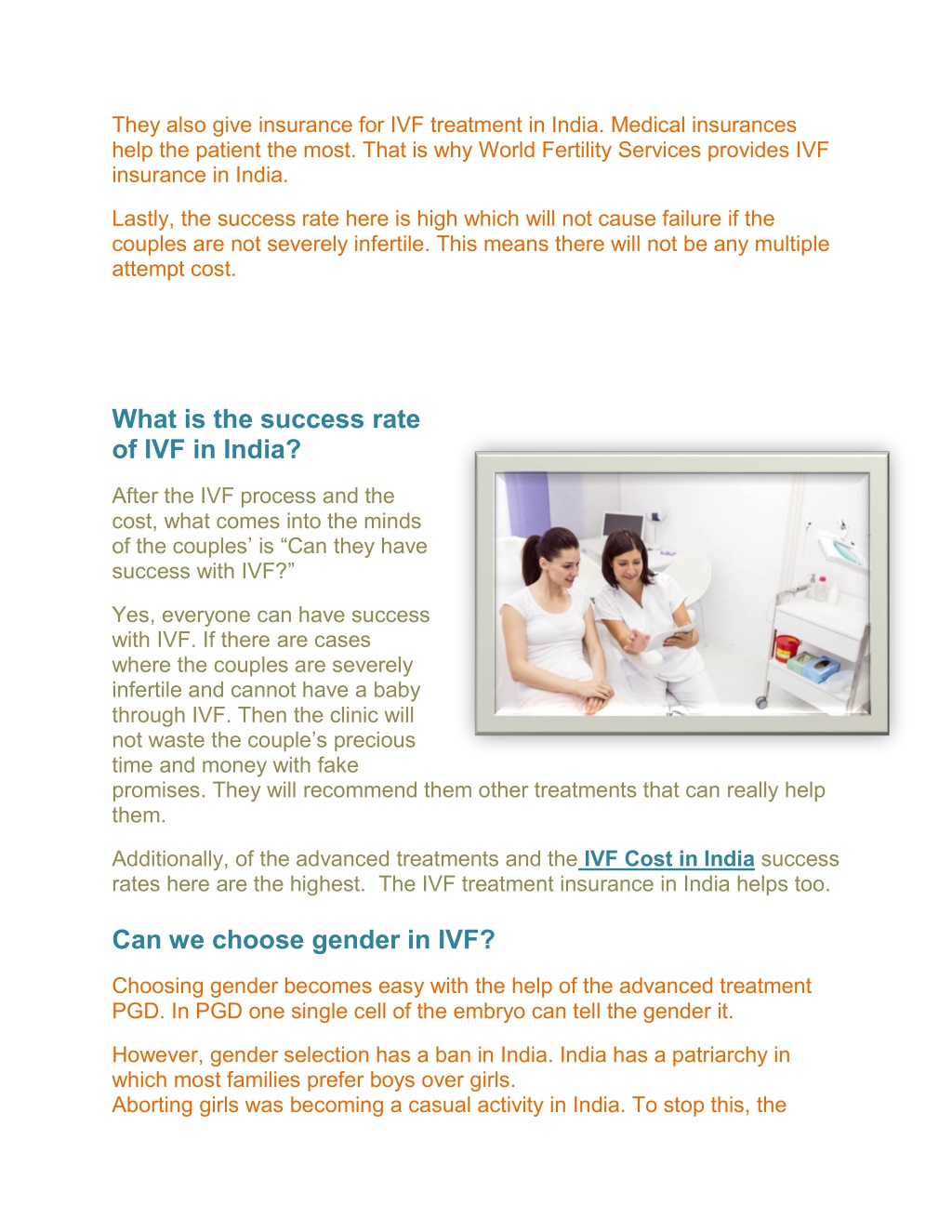How Much Does IVF Cost in Florida? Your Ultimate Guide to Understanding the Price Tag
If you’re dreaming of starting a family but facing fertility challenges, in vitro fertilization (IVF) might be on your radar. It’s a life-changing option that’s helped millions of people welcome little ones into their lives. But let’s be real—IVF isn’t cheap, and figuring out the costs can feel like trying to solve a puzzle with missing pieces. If you’re in Florida or thinking about heading to the Sunshine State for treatment, you’re probably wondering: How much is IVF in Florida, anyway?
Good news—you’ve landed in the right spot! This guide is your one-stop resource for understanding IVF costs in Florida as of March 2025. We’ll break down everything from the base price to hidden fees, insurance quirks, and even some money-saving tricks that don’t always make it into the usual articles. Plus, we’ll sprinkle in real-world examples, fresh research, and a few interactive twists to keep you engaged. Ready to dive in? Let’s get started.
What’s the Real Cost of IVF in Florida?
IVF costs in Florida can vary wildly depending on where you go, what you need, and how many cycles it takes to get that positive pregnancy test. On average, you’re looking at $12,000 to $20,000 per cycle—but that’s just the starting point. Some clinics advertise as low as $5,000, while others climb past $30,000 when you add in extras like medications or fancy lab techniques. So, what’s driving this price range?
The truth is, IVF isn’t a one-size-fits-all deal. Your total bill depends on a bunch of factors: the clinic’s location (Miami’s pricier than Pensacola), your age, your unique fertility needs, and whether you’re tossing in add-ons like genetic testing. To give you a clearer picture, here’s a quick snapshot of what a single cycle might look like:
- Base IVF Cycle: $10,000–$17,000 (includes monitoring, egg retrieval, and embryo transfer)
- Medications: $2,000–$5,000 (these can double if you need more rounds)
- Extras (like freezing embryos): $1,000–$6,000
Sounds like a lot, right? It is—but don’t panic yet. We’re going to unpack all of this step-by-step so you can plan smart and maybe even save a few bucks along the way.
Breaking Down the IVF Process (and What You’re Paying For)
To understand the price, it helps to know what IVF actually involves. Picture it like a recipe: each step has its own ingredients, and they all add up. Here’s how it works—and what you’re shelling out for at each stage.
Step 1: Getting Ready—Initial Consultations and Tests
Before the magic happens, your doctor needs to figure out what’s going on with your body. This means an initial consultation (usually $200–$500) plus fertility tests like blood work, ultrasounds, and maybe a semen analysis for your partner. Total cost? Around $1,500–$3,000, depending on how thorough your clinic gets.
- ✔️ Tip: Ask if your clinic bundles the consult with testing—it could save you a couple hundred bucks.
- ❌ Heads-Up: Some places charge separately for every little test, so get a detailed quote upfront.
Step 2: Medications—Fueling the Egg Factory
Next, you’ll take meds to kick your ovaries into gear and produce multiple eggs. These aren’t your average over-the-counter pills—they’re injectable hormones, and they’re pricey. Expect to spend $2,000–$5,000 per cycle, though costs can climb higher if you need stronger doses or longer treatment.
- Fun Fact: A 2023 study from the American Society for Reproductive Medicine found that medication costs account for about 25% of the average IVF bill in the U.S. That’s a big chunk!
Step 3: Egg Retrieval and Lab Time
Once your eggs are ready, a doctor retrieves them in a quick outpatient procedure (think 20–30 minutes). Then, the lab team fertilizes them with sperm—either your partner’s or a donor’s—and grows the embryos. This part usually runs $6,000–$10,000, covering the retrieval, lab fees, and anesthesia.
Step 4: Embryo Transfer
Finally, the doctor places an embryo (or two) into your uterus. This step is often included in the base fee, but if you’re using frozen embryos later, add another $3,000–$6,000 for thawing and transfer.
The Bottom Line
Add it all up, and a “basic” IVF cycle in Florida lands between $12,000 and $20,000. But here’s the kicker: most people don’t get pregnant on the first try. The Society for Assisted Reproductive Technology (SART) says only about 26% of cycles lead to a live birth for women under 35. That means you might need 2–3 rounds, pushing your total closer to $30,000–$50,000. Ouch, right?
Why Does IVF Cost More (or Less) in Florida?
Florida’s a big state with a mix of bustling cities and quieter towns, and that affects IVF prices. Let’s explore what’s behind the numbers.
Location, Location, Location
Clinics in fancy spots like Miami or Palm Beach tend to charge more—think $15,000–$20,000 per cycle—because rent, staff salaries, and demand are higher. Head to smaller cities like Orlando or Deltona, and you might find prices dipping to $10,000–$14,000. For example, CNY Fertility in Sarasota offers cycles as low as $5,769, but that’s an outlier.
- Quick Example: A couple in Tampa paid $14,500 at a local clinic, while their friends in Miami shelled out $18,000 for the same treatment. Same state, different wallets!
Clinic Reputation and Success Rates
You get what you pay for—or do you? Top-tier clinics with high success rates (like 50%+ live births per cycle) often charge a premium. Why? They’ve got cutting-edge labs, experienced doctors, and a track record that justifies the cost. Budget clinics might save you money upfront but could have lower odds of success, meaning more cycles (and more cash) down the road.
- ✔️ Pro Move: Check SART’s clinic success rates online before you commit. A higher upfront cost might save you in the long run.
Add-Ons That Add Up
Some clinics push extras like preimplantation genetic testing (PGT) or intracytoplasmic sperm injection (ICSI). These can boost your chances but also your bill—PGT alone adds $3,000–$5,000. Ask yourself: Do I really need this, or is it just extra frosting on the cake?
Does Insurance Cover IVF in Florida?
Here’s the not-so-fun part: Florida doesn’t mandate insurance companies to cover IVF. That means you’re mostly on your own unless your employer steps up with fertility benefits. Nationally, only 21 states have some kind of IVF coverage law, and Florida isn’t one of them (as of March 2025).
What’s Covered (or Not)?
- If You’re Lucky: Some plans cover diagnostics (like those initial tests) or even part of the meds. A few big employers—like Starbucks or Amazon—offer IVF benefits, sometimes up to $25,000.
- More Likely: You’re paying out of pocket. A 2024 Resolve.org survey found that 70% of U.S. fertility patients get zero insurance help for IVF.
How to Check
Call your insurance provider and ask:
- “Do I have any fertility treatment coverage?”
- “What’s my out-of-pocket max for medications?”
- “Are there limits on cycles or procedures?”
If you strike out, don’t lose hope—there are other ways to lighten the load, which we’ll cover soon.

Interactive Quiz: What’s Your IVF Budget Style?
Let’s take a quick break and figure out how you might approach IVF costs. Pick the answer that fits you best for each question, then tally your points!
- How do you handle big expenses?
- A) Save up for months (2 points)
- B) Look for discounts or deals (3 points)
- C) Throw it on a credit card and figure it out later (1 point)
- What’s your research style?
- A) I dig into every detail (3 points)
- B) I ask friends for advice (2 points)
- C) I wing it (1 point)
- How flexible are you with timing?
- A) I’d wait for the perfect plan (3 points)
- B) I’d start soon if it’s affordable (2 points)
- C) I want it now, cost be damned (1 point)
Score:
- 7–9: The Planner—You’ll crunch numbers and find the best value.
- 4–6: The Balancer—You’re practical but open to options.
- 3: The Go-Getter—You’re ready to jump in, just watch that wallet!
No matter your style, we’ve got tips coming up to match it.
Hidden Costs You Might Not Expect
Most articles list the obvious stuff—base fees, meds, transfers. But there are sneaky expenses that can catch you off guard. Here are three big ones that don’t get enough airtime:
1. Travel and Time Off Work
If your clinic’s an hour away, gas, parking, and maybe even a hotel add up fast. Plus, IVF means multiple appointments—think 8–12 visits per cycle. Missing work could mean lost wages, especially if you don’t have paid leave.
- Real Story: Sarah from Orlando drove to Tampa twice a week for monitoring, spending $200 on gas and $150 on parking over one cycle. “I didn’t even think about that until the bills hit,” she said.
2. Emotional Support Costs
IVF’s a rollercoaster, and therapy or support groups can help. A session with a counselor might run $100–$200, and while it’s not mandatory, it’s a lifeline for many.
- Stat: A 2024 Stanford study found that women who stay infertile after IVF are 48% more likely to need mental health support. It’s real, and it’s worth budgeting for.
3. Storage Fees for Frozen Embryos
Got extra embryos? Freezing them costs $500–$1,000 upfront, plus $300–$600 per year to keep them on ice. If you’re not planning round two right away, those fees creep up.
- ✔️ Hack: Ask your clinic about discounts for paying storage upfront for multiple years.
Affordable IVF Options in Florida: Can You Cut Costs?
Yes, you can! IVF doesn’t have to drain your savings if you play it smart. Here are some practical ways to make it more affordable—some tried-and-true, others fresh ideas you won’t find everywhere.
Shop Around (But Check Success Rates)
Florida’s got dozens of clinics, from big names like Shady Grove Fertility to budget-friendly spots like CNY Fertility. Compare quotes, but don’t just chase the cheapest price—look at live birth rates too.
- Example: CNY Fertility’s $5,769 base price is tempting, but their success rate for women under 35 is around 40%, while a pricier clinic like RMA Florida hits 50%+.
Mini IVF: A Lighter Option
Mini IVF uses fewer meds and a simpler process, cutting costs to $5,000–$7,000 per cycle. It’s great for younger women or those with good egg reserves, though success rates might be lower.
- Who It’s For: If you’re under 35 with no major fertility issues, ask your doc if this could work.
Multi-Cycle Packages
Some clinics offer deals like “buy two cycles, get a discount” or even refund programs if you don’t get pregnant after a set number of tries. Bundl Fertility, for instance, bundles 2–3 cycles for $20,000–$30,000 total, saving you thousands compared to paying per cycle.
Grants and Financing
Nonprofits like Baby Quest Foundation offer IVF grants (up to $15,000!), and clinics often partner with lenders for low-interest loans. Future Family, a popular option, lets you spread payments over 3–60 months with rates as low as 0% APR.
- ✔️ Action Step: Apply for a grant now—deadlines can sneak up, and funds run out fast.
Fertility Tourism—Worth It?
Here’s a wild card: some folks travel to states (or countries) with lower costs or better insurance. IVF in Mexico can be as low as $4,000, but factor in travel and safety. Within Florida, sticking to smaller cities might be your best bet.
What’s New in 2025? Fresh Trends and Research
IVF’s always evolving, and 2025’s bringing some cool updates that could affect your wallet. Here’s what’s buzzing based on the latest chatter and studies.
Rising Costs (But More Options)
A 2024 MarketsandMarkets report predicts the global IVF market will hit $1.65 billion by 2029, with costs creeping up 5–10% yearly. In Florida, expect base prices to nudge toward $13,000–$21,000 by year-end as clinics invest in new tech.
Tech Boosting Success
AI’s making waves in embryo selection, potentially upping success rates by 10–15% (per a 2024 Fertility and Sterility study). Clinics offering this might charge more—think $1,000 extra—but fewer failed cycles could balance it out.
Employers Stepping Up
Trending on X lately: more companies are adding IVF benefits to attract talent. A 2025 Mercer survey found 45% of large U.S. firms now cover some fertility costs, up from 38% in 2023. If you’re job hunting, this could be a game-changer.
Your IVF Cost Calculator: A DIY Estimate
Let’s put this all together with a hands-on tool. Grab a pen and estimate your costs based on your situation. Here’s how:
- Base Cycle Fee: Pick a range ($10,000–$17,000) based on your area.
- Meds: Add $2,000–$5,000 (lower if you’re young, higher if not).
- Extras: Toss in $1,000–$5,000 for freezing, PGT, or ICSI if you need them.
- Hidden Costs: Budget $500–$2,000 for travel, time off, etc.
- Cycles: Multiply by 2–3 if you think you’ll need multiple tries.
Example: Miami, age 38, with PGT and 2 cycles:
- Base: $17,000
- Meds: $4,000
- PGT: $4,000
- Hidden: $1,000
- Total per cycle: $26,000 × 2 = $52,000
Tweak it for your story—what’s your number?
Real Couples, Real Costs: Stories from Florida
Numbers are great, but stories hit home. Meet three Florida couples who’ve been there—and what they learned.
Couple 1: Jen and Mike, Tampa
- Cost: $16,000 for 1 cycle
- Outcome: Pregnant on the first try!
- Lesson: “We went with a mid-range clinic and skipped extras. It worked for us, but we got lucky.”
Couple 2: Lisa and Carlos, Miami
- Cost: $45,000 over 3 cycles
- Outcome: Baby boy after round 3
- Lesson: “The genetic testing was worth it—our first two embryos wouldn’t have made it. Wish we’d budgeted for multiple rounds from the start.”
Couple 3: Tara and Sam, Orlando
- Cost: $28,000 (2 cycles with a grant)
- Outcome: Still trying
- Lesson: “The grant helped, but travel costs blindsided us. Next time, we’re picking a closer clinic.”
What’s your takeaway from their journeys?

3 Things No One’s Talking About (But Should Be)
Most IVF cost guides stick to the basics, but these under-the-radar points could save you time, money, or heartache.
1. The Pharmacy Factor
IVF meds aren’t all priced the same. Specialty pharmacies like MDR or Freedom Fertility can slash costs by 20–30% compared to big chains. A 2024 GoodRx analysis found injectable meds like Gonal-F dropping from $3,000 to $2,100 with the right supplier.
- ✔️ Try This: Call around or use an online discount program before filling your script.
2. Tax Breaks You’re Missing
Did you know medical expenses over 7.5% of your adjusted gross income are tax-deductible? For a $50,000 income, that’s anything above $3,750. IVF often qualifies—meds, procedures, even travel. A quick chat with a tax pro could net you $2,000–$5,000 back.
3. The Mental Math of Stopping
Everyone plans for success, but what if IVF doesn’t work? A 2025 SIEPR study estimates couples spend an average of $50,000 before calling it quits. Setting a “stop point” (say, 3 cycles or $40,000) can keep you from chasing a dream past your limits.
Your Next Steps: Making IVF Work for You
So, where do you go from here? Whether you’re a planner, a balancer, or a go-getter, here’s a game plan to tackle IVF costs in Florida.
Step 1: Get a Quote (or Three)
Call clinics in your area—or beyond—and ask for a detailed breakdown. Include meds, add-ons, and storage fees. Pro tip: record the convo (with permission) so you don’t miss anything.
Step 2: Explore Funding
- Check your insurance (even if it’s a long shot).
- Apply for a grant—Baby Quest and The Tinina Q. Cade Foundation are Florida-friendly.
- Look into loans or multi-cycle deals.
Step 3: Build a Buffer
Save an extra 10–20% for surprises—travel, extra meds, or a second cycle. A $15,000 budget? Aim for $16,500–$18,000.
Step 4: Talk to Your Team
Your doctor, a financial advisor, even a therapist—loop them in. They’ll help you weigh costs vs. chances and keep your head in the game.
Final Thoughts: IVF’s Worth It (If You’re Ready)
IVF in Florida isn’t cheap—$12,000 to $20,000 per cycle, maybe $50,000 total if you need a few tries. But for many, it’s the golden ticket to parenthood. The key? Go in with your eyes open, your budget set, and a plan to make it manageable. You’ve got options—grants, mini IVF, smart shopping—and now you’ve got the know-how too.
What’s your next move? Maybe it’s a call to a clinic, a chat with your partner, or just a moment to dream about that future family. Whatever it is, you’re not alone on this journey. Florida’s full of resources, and this guide’s here whenever you need it. Got a question or a story to share? Drop it in the comments—I’d love to hear from you!


